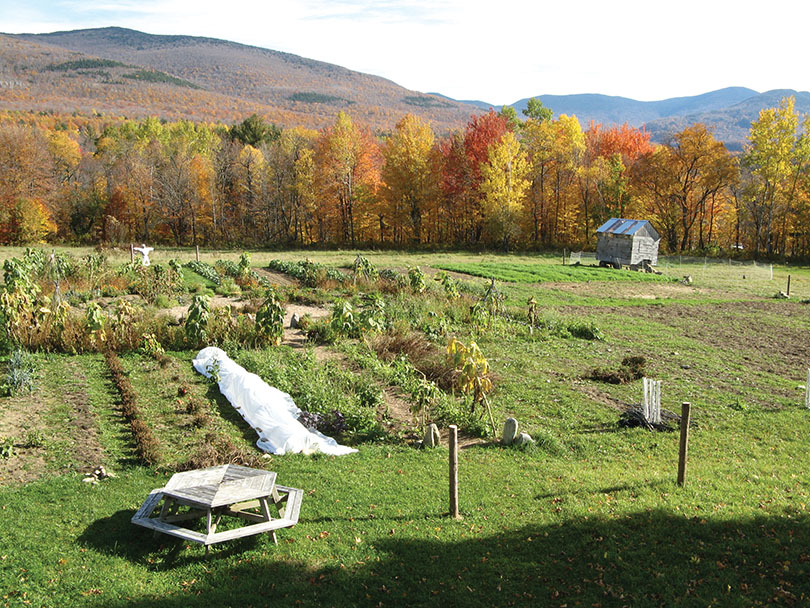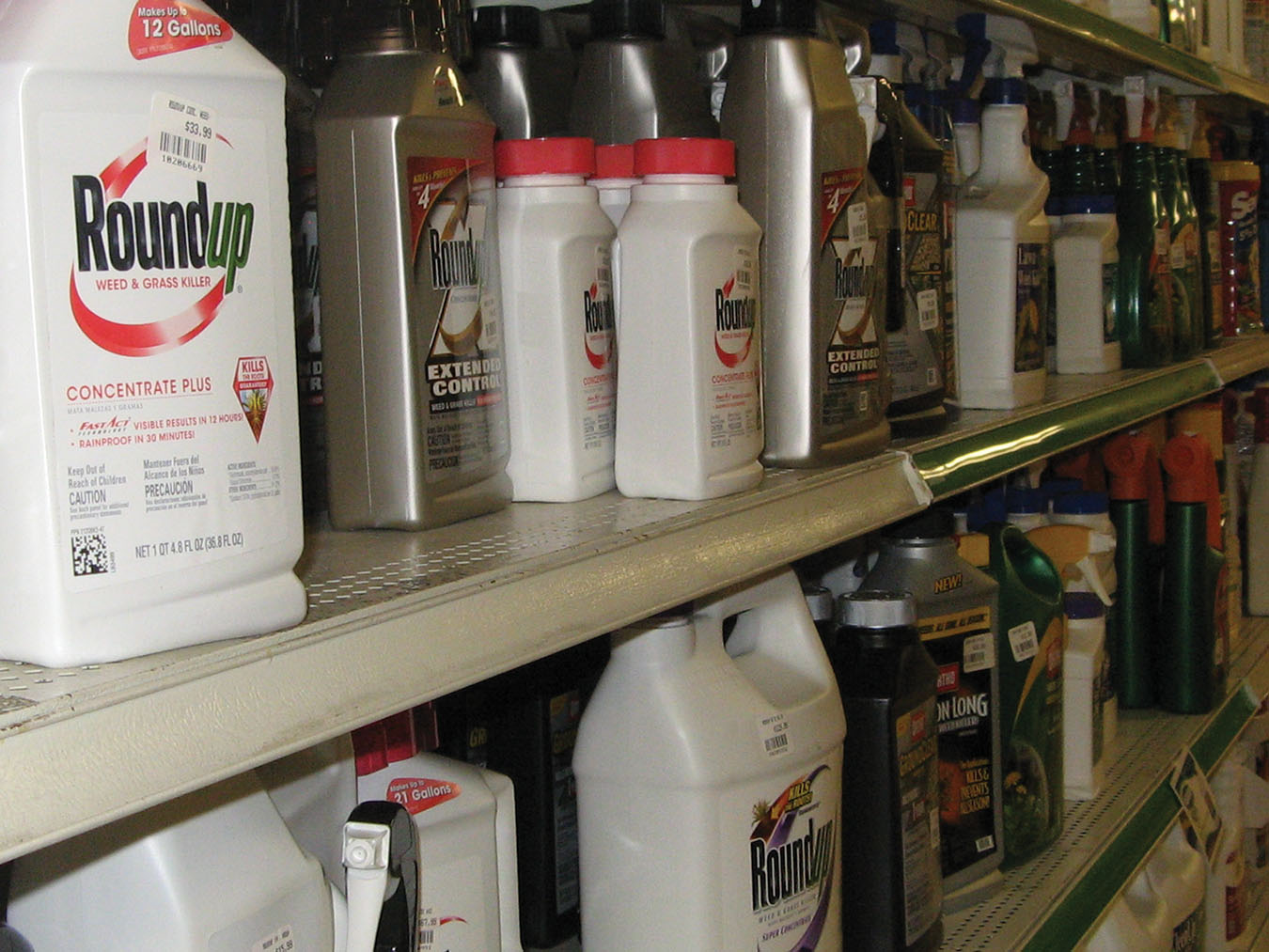A bee problem we can potentially solve – Part 2
by Ross Conrad
Last month in part one of this three part series on greenhouse gases, climate change, and their impact on beekeeping we looked at some of the changes that are being observed and their potential impact on honey bees and beekeepers. Rather than debating whether climate change has an influence on extreme weather events (floods, droughts, hurricanes, etc.), over the past couple years the scientific debate has transformed to focus on the magnitude and extent of its influence, while politicians debate what our response should be.
We also explored some of the basics of soil science and how a healthy microbiome in soil is essential in order for the plants growing in that soil to thrive. Thriving plants produce abundant forage for pollinators, as well as provide crops and biomass while at the same time, the plants pull carbon dioxide out of the atmosphere and exude it into the soil in the form of simple carbohydrates (sugars) that feed soil microbes. It turns out that there are agricultural practices that have proven themselves successful over time at helping plants to maximize the sequestration of carbon into the soil. These are the same practices that ensure plants robust health thus maximizing the quantity and quality of crops and pollinator forage.
Keep the soil covered with plants and plant matter
Bare soil oxidizes carbon in the soil, while plants protect it and add to it. Not only do plants sequester carbon through photosynthesis, they slow carbon emissions by soil microbes by forming a barrier between the air and the soil, and they reduce soil erosion a major factor in soil carbon depletion. Every time soil is exposed, whether it is because the ground is being tilled, a crop has been harvested and the land left fallow, or we leave space between row crops, soil carbon is reduced. Practices such as mulch farming and under-sowing with legumes and cover crops to keep soils covered throughout the year increase soil carbon, keep soil organisms healthy and prevent erosion (Azeez 2009).

France’s “4 per 1000 – soils for food security and the climate” is based on the fact that an annual increase of soil carbon at a rate of just 4% would be enough to stop the present increase in atmospheric carbon. This national effort by France will focus on ecological agricultural practices to sequester carbon to restore stability to our climate.
This also means that tilling the soil needs to be minimized if not abandoned. Not only does tilling or turning the soil ruin the soil structure, it exposes the soil to air so carbon can oxidize and escape. Tilling also disturbs the micro-organism ecosystem in the soil, destroying pore spaces in soil that hold air and water, both vital components for healthy soil organisms. In addition, the act of tilling itself often releases carbon into the atmosphere through the burning of fossil fuels. Research indicates that the highest levels of carbon sequestration are achieved through cropping systems that practice no-till farming and add plenty of organic matter (e.g. compost or cow manure) to the soil (Khorramdel 2013).
Imitate nature’s diversity
Nature shows us that the more diverse a system is, the healthier and more resilient that system is, so to promote healthy soil microbes monocultures should be avoided (Lal 2004) just as honey bee monocultures should be avoided by keeping a variety of families and races of bees rather than just one type of bee from a single source. Monocultures invite pest and disease infestations, while diverse plantings help keep infestations from spreading. A mixture of plants on every square foot of ground provides the opportunity for a larger diversity of soil organisms to fill the greater variety of niches. Mixtures of cover crop varieties are now available to help encourage biodiversity. While crop rotations help support biodiversity, rotations with continuous cover cropping prevent fallow periods of bare soil and increase the activity of soil microbes and enzymes. Research also indicates that when legumes are included in the crop rotation, microbial biomass is increased (Six 2006).
Grazing animals can be an important part of building organic matter in soils, particularly in pastures. Perennial pasturing when properly managed has shown rapid increases in organic matter and soil carbon (Machmuller 2015). Not only do animal hooves break up the soil surface allowing plant seeds, water and air to infiltrate, their manure and urine which are rich in carbon, nutrients and microbes inoculate the soil with biological diversity. I have more to say on the importance of grazing ruminants below.
Discontinue the use of pesticides and synthetic fertilizers
Synthetic agricultural chemicals (herbicides, fungicides, insecticides, etc.) destroy soil carbon. Not only are pesticides lethal to soil organisms, chemical fertilizers have also been shown to destroy organic matter in soil. The Rodale Institute’s Compost Utilization Trials showed that composted manure combined with crop rotations resulted in carbon gains of up to 1.0 ton/acre/year, while the use of synthetic fertilizers without rotations achieved carbon losses of 0.15 ton/acre/year (LaSalle 2008). Meanwhile, 50 years of farm trials at the University of Illinois showed a loss of five tons of soil organic matter per acre on fields where 90 to 124 tons of carbon residue was added on each acre, but a synthetic nitrogen fertilizer was also applied (Khan 2007).
Reforestation and reversing desertification
The release of carbon that had been stored in the ground for millions of years has been accompanied by the destruction of about a third of the world’s forests and grasslands. There are indications that the proper management of woody plants can lead to sizable soil carbon gains (Quinkenstein 2011). The re-establishment of our lost forests and grass lands can play a significant role in helping to restore the atmospheric carbon balance. The work of Kenyan Nobel Peace Prize winner Wangari Maathai’s Green Belt movement, has assisted African women in planting more than 20 million trees and serves as an inspiration.
Another inspiring effort is the work of Allan Savory who demonstrates how holistic planned grazing that mimics nature can stop the process that causes land to turn into desert and help reverse climate change. Approximately half the surface of the Earth is currently desert or in the process of desertification, and a significant part of the reason for this has been the way ranchers and nomadic peoples have grazed their animals. Savory shows that by allowing hundreds of times more animals to graze on a piece of land than the land itself can support, for just a short duration, the land can be regenerated and desertification reversed. Rather than take up more space talking about it here, I encourage you to view Allan’s Ted Talk on mob grazing for a truly inspirational 22 minutes at: https://search.yahoo.com/yhs/search?p=ted+talk+desert+grazing&ei=UTF-8&hspart=mozilla&hsimp=yhs-002
Can we act in time?
Researchers who study soil carbon sequestration to mitigate climate change estimate that we have removed 136 Gigatons of carbon from the soil as a result of land clearing and agriculture since the industrial age (Lal, 2007). This is less than the amount of carbon we need to put back into the soil in order to reduce atmospheric carbon dioxide levels to 350 ppm, the level that NASA climate scientist James Hansen says is a relatively “safe” level. Depending on who’s numbers you look at, agriculture contributes anywhere from seven to 15 percent of the world’s greenhouse gas emissions. Other major contributors to GHG emissions are categorized as industry (manufacturing, packaging, transportation and storage), and changes in land use (such as through deforestation and desertification). Unfortunately these categorizations ignore the fact that agriculture is one of the world’s major industries accounting for much of the processing, packaging, shipping and storage activity in the world. Agriculture is also a major cause of deforestation and responsible for much of those emissions as well. As a result, our current industrial agricultural model is both directly and indirectly responsible for about a third of GHG emissions worldwide. Clearly our agricultural system must change from being a major contributor to the problem, to being part of the solution.
Given that we are currently at 400 ppm carbon dioxide and in order to keep climate change to a minimum we need to reverse the CO2 buildup and get back to at least 350 ppm quickly, we need to remove and store 50 ppm of carbon dioxide in the soil. This works out to about 106 Gigatons of carbon. Since we have removed about 136 Gt since 1750, we know the carbon will fit back in the ground. All it will take is to convert all of the world’s agriculture to incorporate practices that sequester carbon: such as the use of cover crops, no-till, no chemicals, replanting our forests and holistic planned grazing. Since the agricultural practices that are needed are the same practices used by many organic, biodynamic and permaculture farmers, what it will ultimately take to reverse climate change is tens of millions of new eco-agricultural farmers all around the globe, supported by hundreds of millions of conscious consumers. That is how simple, and how difficult, the challenge before us is.
Of course there are the naysayers who will claim that this will never work – that organic agriculture will never produce enough food for our ever growing world population and we need modern industrial agriculture in order to feed the world. This argument ignores the fact that currently there are millions of people starving and going to bed hungry every day even with industrial agriculture. Various studies point to the fact that the future will not be dominated by the corporate model of agriculture we see today. (DeSchutter 2011, Foley 2011, Natural Resource Council 2010, FAO 2012) Instead the world’s increasing demand for food can only be sustained by smaller, more localized forms of ecological agriculture that are much more efficient (both in terms of energy and in terms of the amount and quality of food produced from a given area of land).
Not only will our effort to reverse climate change improve the chances for our bees (and much of the rest of life) to survive in the long-term, but the bees will benefit greatly in the short-term from the removal of toxic pesticides from the environment. Of course this also means that the face of the beekeeping industry will also have to change dramatically (along with the rest of the agricultural industry). The huge monoculture farms that are only able to sustain themselves through the use of pesticides and fossil fuel burning machinery will become a thing of the past, as the world realizes the grave mistake it has made by embracing industrial agriculture.
Along with the phase out of these mega-farms will be the phase out of large-scale migratory beekeepers that not only rely on the existence of these inefficient farms for their existence, but contribute to the problem by requiring fossil fuels to power the trucks that run the bees around the country. In its place we are likely to see many farms returning to the days were bees are kept on the farm in order to meet pollination needs, and migratory beekeeping operations are likely to be much smaller in scale and more localized in their activity.
As I write this article, the 21st United Nations Climate Change Summit is taking place with 195 negotiators from around the world gathering in Paris, France for what organizers called the largest-ever gathering of its kind. Known as COP 21, the climate conference objective is to reach a legally binding and universal agreement on climate from all the nations of the world. Given that world leaders have been meeting like this for 20 years now and have so far failed to reach any meaningful agreement that has actually had the effect of reducing greenhouse gas emissions, this year’s summit is unlikely to succeed as well. In large part this failure is a result of our unwillingness to change. Until the vast majority of us are willing to change how we live and do things, heads of government and business leaders are unlikely to change the way they do things to any meaningful degree.

Although Monsanto used the occasion of the COP21 meeting to promote how much they are doing to help support agricultural practices that sequester carbon, the data suggests that chemical pesticides and herbicides like Monsanto’s Round Up actually cause carbon levels in soils to decrease.
Whatever the result of the COP 21 summit, I can guarantee that it is not going to be enough. We have reached the point where drastic changes are going to be required if we are going to limit climate impacts to severe rather than catastrophic consequences. But even if we miraculously stopped burning all greenhouse gasses tomorrow, reduced our energy use and waste, ramped up our renewable energy production, and transformed industrial agriculture to an ecologically harmonious model, the climate changes that we are seeing today will continue to get worse before they get better. As beekeepers, we will have to learn how to assess our vulnerability to the changing climate, plan and prepare mitigation measures and evaluate our capacity to adapt to keep bees in such an unpredictable world. This will be the focus of next month’s installment.
Special thanks to the Massachusetts Chapter of the Northeast Organic Farming Association and Jack Kittredge for the white paper: Soil Carbon Restoration: Can Biology do the Job?, which formed the basis for this article series. www.nofamass.org/content/soil-carbon-restoration-can-biology-do-job
Ross Conrad is the author of Natural Beekeeping, Revised and Expanded 2nd edition.
References:
Azeez, G., 2009 Soil Carbon and Organic Farming, UK Soil Association, www.soilassociation.org/LinkClink.aspx?fileticket=SSnOCMoqrXs%3D& tabid=387
DeSchutter, O., Agroecology and the Right to Food, United Nations Human Rights Office of the High Commissioner, Report presented at the 16th Session of the United Nations Human Rights Council, 8 March, 2011
Foley, J.A., et al., Solutions For a Cultivated Planet, Nature 478, 337-342, 20 October 2011
Food and Agriculture Organization (FAO), Toward the Future We Want: End Hunger and Make the Transition to Sustainable Agriculture and Food Systems, 2012
Khan, SA., et. al., 2007 The myth of nitrogen fertilization for soil carbon sequestration, Journal of Environmental Quality; Nov/Dec 2007; Vol. 36
Khorramdel, S., et. al., 2013 Evaluation of carbon sequestration potential in corn fields with different management systems, Soil and Tillage Research, 133: 25-31
Kittredge, J., 2015 Soil Carbon Restoration: Can Biology do the Job?, Northeast Organic Farming Association/Massachusetts Chapter
Lal, R., 2004 Soil carbon sequestration to mitigate climate change, Geoderma 123, 1-22
Lal, R., et. al., 2007 Soil carbon sequestration to mitigate climate change and advance food security, Soil Science 0038-075X/07/17212-943-956
www.ars.usda.gov/research/publications/publications.htm?seq_no_115=222066
LaSalle, TJ., Hepperly, P., 2008 Regenerative Organic Farming: A Solution to Global Warming, Rodale Institute, pg 1 grist.files.wordpress.com/2009/06/rodale_research_paper-07_30_08.pdf (accessed 11/1/2015)
Machmuller, M., et. al., 2015 Emerging land use practices rapidly increase soil organic matter, Nature Communications 6, Article number 6995
Natural Research Council, Toward Sustainable Agricultural Systems in the 21st Century. The National Academies Press, Washington, DC, 2010
Quinkenstein, A., et. al., 2011 Assessing the carbon sequestration in short rotation coppices of Robina pseudoacacia L. on marginal sites in northeast Germany, in Carbon Sequestration Potential of Agroforestry Systems: Opportunities and Challenges, 2011 Kumar BM and Nair PKR (editors) Advances in Agroforestry 8
Six, J., et. al., 2006 Bacterial and fungal contributions to carbon sequestration in agroecosystems, Soil Science Society of America Journal 70:555








